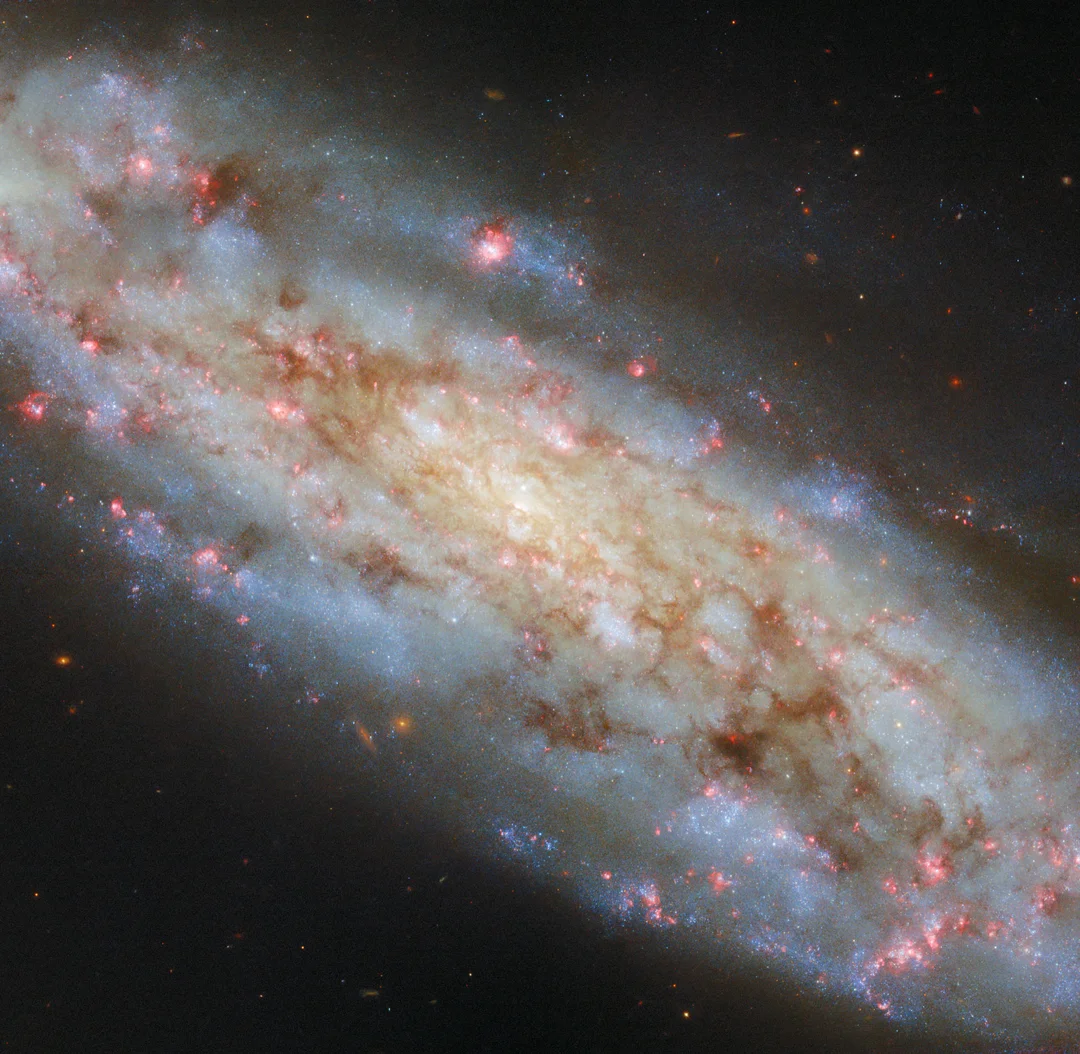
Hubble’s Glimpse into the Cosmos: Unveiling the Beauty of NGC 3507 and NGC 3511
The Hubble Space Telescope continues to amaze, offering breathtaking views of distant galaxies. Recently, Hubble captured stunning images of two spiral galaxies, NGC 3507 and NGC 3511, providing valuable insights into star formation and galactic structures. These images not only offer visual splendor but also contribute to our understanding of the universe.
NGC 3507: A Barred Spiral Gem

Located approximately 46 million light-years away in the constellation Leo, NGC 3507 is a barred spiral galaxy that spans nearly 50,000 light-years. As the Hubble astronomers explain, it's classified as a barred spiral because its sweeping spiral arms emerge from a central bar of stars. Discovered by William Herschel in 1784, NGC 3507 forms a pair with another spiral galaxy, NGC 3501. While NGC 3507 presents a classic galactic pinwheel appearance, its partner, NGC 3501, appears as a streak. The proximity of these galaxies allows for detailed observation of features like spiral arms, dusty gas clouds, and star clusters.
NGC 3511: A Tilted View into Star Formation

The Hubble Space Telescope also recently captured a new image of NGC 3511, an intermediate spiral galaxy situated about 43 million light-years away in the constellation of Crater. This galaxy, discovered by William Herschel in 1786, is part of the NGC 3511 group, which includes NGC 3513 and ESO 502-024. Hubble’s perspective reveals NGC 3511 tilted at approximately 70 degrees, an angle that provides a fascinating view between a face-on and edge-on orientation.
The study of NGC 3511 is part of a larger survey examining the star formation cycle in nearby galaxies. Hubble's observations, utilizing multiple filters, capture various wavelengths of light, including the red glow emitted by hydrogen gas energized by the ultraviolet radiation of young stars. These radiant red clouds, often surrounding clusters of brilliant blue stars, highlight regions of intense star birth. By cataloging and measuring the ages of these stars, astronomers gain valuable insights into the life cycles of stars, which are typically less than a few million years old and significantly more massive than our Sun.
These Hubble observations provide essential data for astronomers studying the dynamics of galaxies. The detailed images allow for the mapping of star distributions, the analysis of gas clouds, and the exploration of the processes that govern star formation. The distinct characteristics of each galaxy—NGC 3507’s barred structure and NGC 3511’s tilted perspective—offer unique opportunities to deepen our understanding of the cosmos.
What other secrets do these galaxies hold? What can we learn from future Hubble observations? Share your thoughts and theories in the comments below!